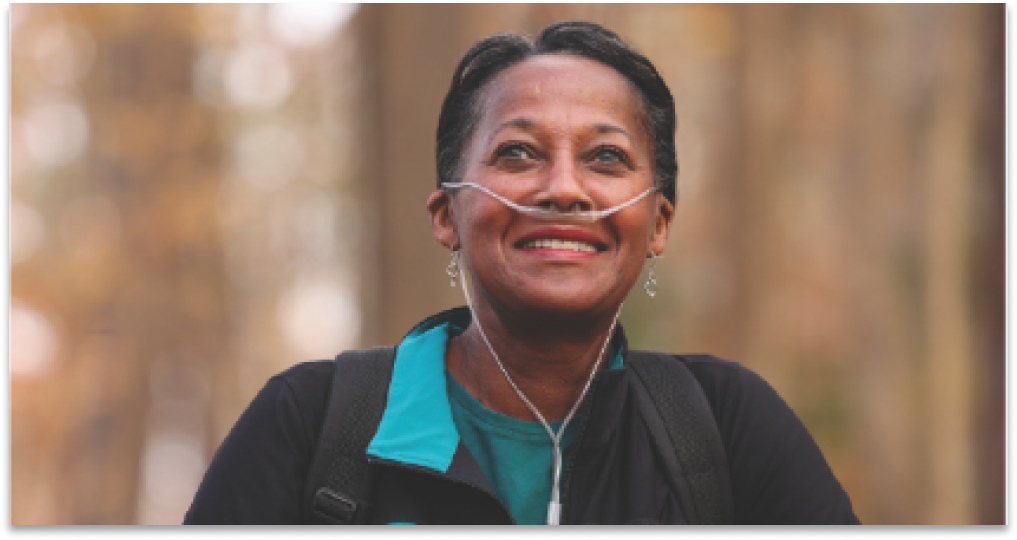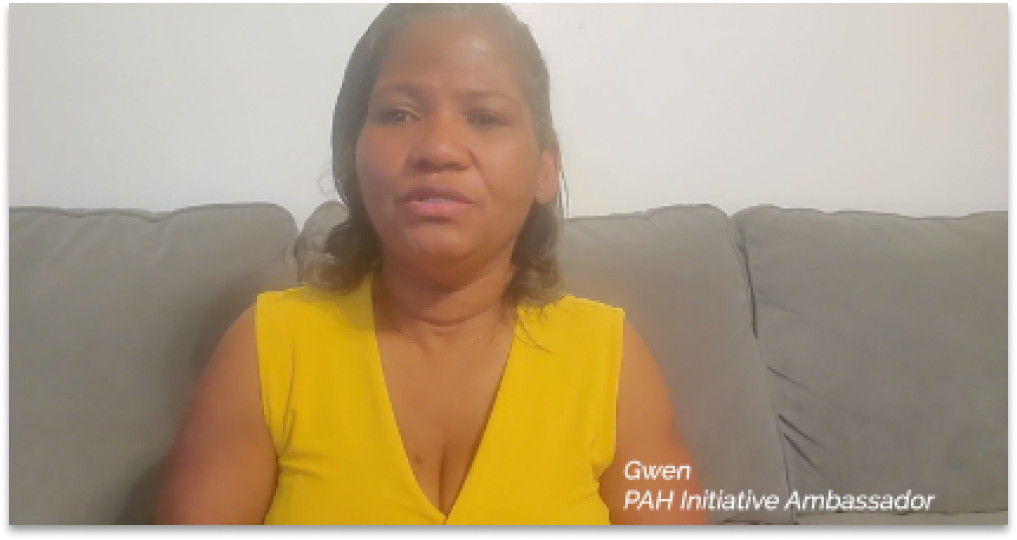[On-screen text: Nathan living with PAH]
When I was younger I was extremely active and always on the go. I worked two jobs, and on the weekends when I wasn't working I was dancing at the club. I had no idea what was coming.
When I was 35 I took my first vacation to Puerto Rico with my fiancée. A few days into the trip I fell extremely ill. I could barely stand up straight. I was extremely lethargic. I could barely walk more than a few steps without my fiancée's help as I was extremely short of breath.
I was extremely scared. I thought something was extremely wrong. I didn't know what was--what was going to happen or what was going on. While we were in Puerto Rico I went to four different ER rooms. I flew back to the States and had months of testing and doctors’ visits.
Later I was diagnosed with pulmonary arterial hypertension or PAH. The doctors performed a risk assessment and a right heart catheterization and we found out my risk assessment score was high.
Me and my fiancée were feeling extremely scared. We were supposed to be getting married in just a few short months and we didn't know if that was going to still happen or not. I never heard of PAH before all of before seeing all of these doctors
I lost my will to live and I quit my job because I didn't see that there was a point in continuing to work. Looking back I after going through some photos and talking to my mother and looking back through time that I actually had symptoms of PAH but just didn't realize it at the time until after I was diagnosed.
I had some shortness of breath after exercising which I thought was just attributed to allergies. And I had significant water retention when I went back through those pictures. The treatment option that the doctor gave me treated the endothelium pathway. And because it helped quite a bit I felt significantly better but I still wasn't feeling a hundred percent back to my normal self.
My doctors and I decided to try a prostacyclin class treatment because it treated another pathway that other PAH medications didn’t. We talked about the available forms oral, inhaled or IV pump. We thought that taking the oral, pill form was the right choice for me. We went over all the potential risks and decided to move forward with the treatment.
[On-screen text: Prostacyclin-class medications may cause side effects. These may be different depending on how you take the medication. Talk to your healthcare provider about possible side effects before you start taking prostacyclin-class therapy. Side effects of prostacyclin-class medications may include: headache, muscle pain, diarrhea, flushing, jaw pain, and nausea]
Together with my wife and my doctor we set goals to monitor my progress and to keep track of my improvement.
[On-screen text: Prostacyclin-class medications are used to treat 1 of several treatment pathways for PAH. Prostacyclin-class medications have been shown to help people with PAH in several ways, including: Improving PAH symptoms, like shortness of breath and fatigue, do more without symptoms, reduce strain on the heart, keep PAH from getting worse]
It's important to discuss treatment options for each pathway with your healthcare team especially if you're not meeting your healthcare goals.
I did use the PH Association and the PAH Initiative and did my own research using various online resources to learn that I could lower my risk status. I began to have hope. I began to feel happy. I began to want to live life to my fullest and do everything that I couldn't do before. I kind of began to find every reason to live I joined several support groups in my local community and online.
I began sharing my story and my knowledge in hopes that it might help impact others’ view how they can live life with PAH. My prostacyclin-class treatment hasn't been without struggle. I had to work with my doctor to find the right dose to my prostacyclin-class medication It took longer than expected to reach my recommended dose because I experienced a lot of headaches if I upped my dose too fast.
Finding the right dose and treatment plan I'm now less limited than I was before and now I'm considered a low-risk status. And now I can walk further and do more with less symptoms. I try to stay as active as I can. I no longer go dancing at the club but I find other ways to stay active. I like to go outdoors. I like to go shopping with the wife. I like to go to dinner with the wife. And I like to go to the beach when I can.
Since my improvement I've begun working in insurance sales from home and I enjoy doing that. I would have to say my biggest supporter has pretty much been the love of my life my wife, Nay. To be quite honest without my wife I'm not even sure I'd still be here. I would definitely say thereare still difficult days with the PAH. It just comes with the territory but I try to live each day to its fullest even when I'm not feeling the greatest.
I still try to do what I can. I still try to get outdoors. I still work when I have to. I don't see any reason why not to because every day is a new reason to live.
Everyone’s story is unique, especially when you’re living with pulmonary arterial hypertension (PAH).
In this short, inspiring video, Nathan discusses the challenges of living with PAH, his proactive approach to living with PAH, and how he’s learned to live each day to the fullest.

Sign up to receive future magazines, our email newsletter, and other useful resources to help navigate life with PAH.
Sign UpPAH is a complicated disease that can be difficult to understand. We’ve broken it down for you with easy-to-understand information, simple graphics, and informative videos from a PAH specialist.
What Is PAH?
Learn how Peggy renewed her competitive spirit after her PAH diagnosis and how she won't let an oxygen tank define her.
Competitive Spirit with PAH ⟩
How has knowing their risk status helped Lauren and Karen better understand if their treatment plan is working?
Knowing your PAH Risk Status ⟩
Living with PAH can be a big adjustment and taking care of yourself can make a big difference. But where do you start?
Self-Care and Healthy Living ⟩